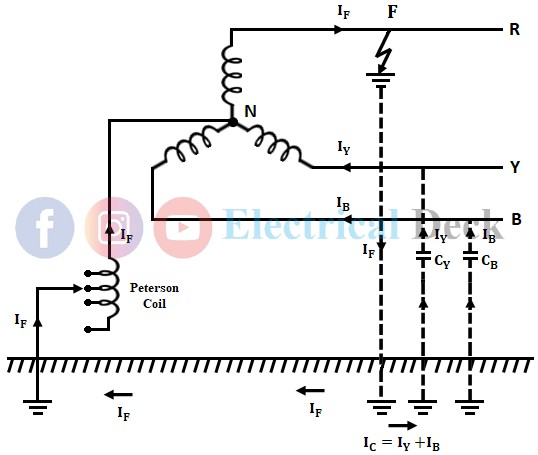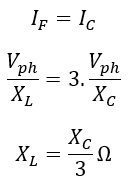The Peterson coil is an adjustable iron-cored reactor connected between the neutral point and ground. It has the capability of producing resonance by turning the capacitance of the healthy phases during a line to ground fault. It is also known as an arc suppression coil or ground-fault neutralizer. The Peterson coil prevents the arcing grounds which leads to overvoltage on systems with an underground neutral.
During an earth fault, the arcing grounds are self-extinguished by the Peterson coil, and also in the case of sustained faults, it reduces the earth current to a low value so that the continuity of supply to the healthy phases is not interrupted.
Tappings are provided to tap the coil for a suitable value of inductive reactance depending upon the length of the transmission line and the capacitance to be neutralized.
Reactance of Peterson Coil :
The connection of the Peterson coil in resonant grounding for a 3-phase system is shown in the below figure.
Let the earth fault has occurred at point F in phase R. The fault current IF starts to flow from point F to the ground and then to neutral N through the Peterson coil and back to the faulty phase. Fault current IF flowing through the Peterson coil is given by,IF = Vph/XL- Vph = Phase voltage
- XL = Inductive reactance of the peterson coil.
The line-to-earth capacitance of the healthy phases, phase Y and phase B is CY and CB respectively. The voltage across the line to earth in a resonant grounded system during an earth fault is increased by √3 times because the system behaves as an ungrounded system.
Hence, if I is the charging current of phase to earth, then it becomes √3I per phase during an earth fault. The charging currents of the healthy phases are displaced by 120°. Therefore the resultant charging current is √3 times that of the charging current per phase,



